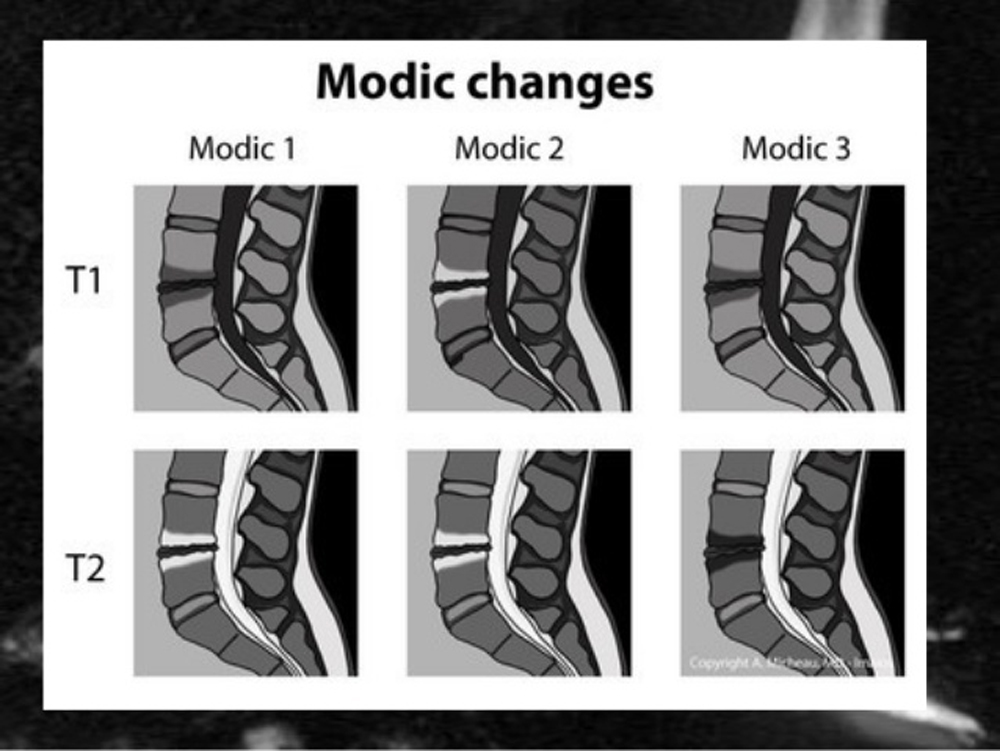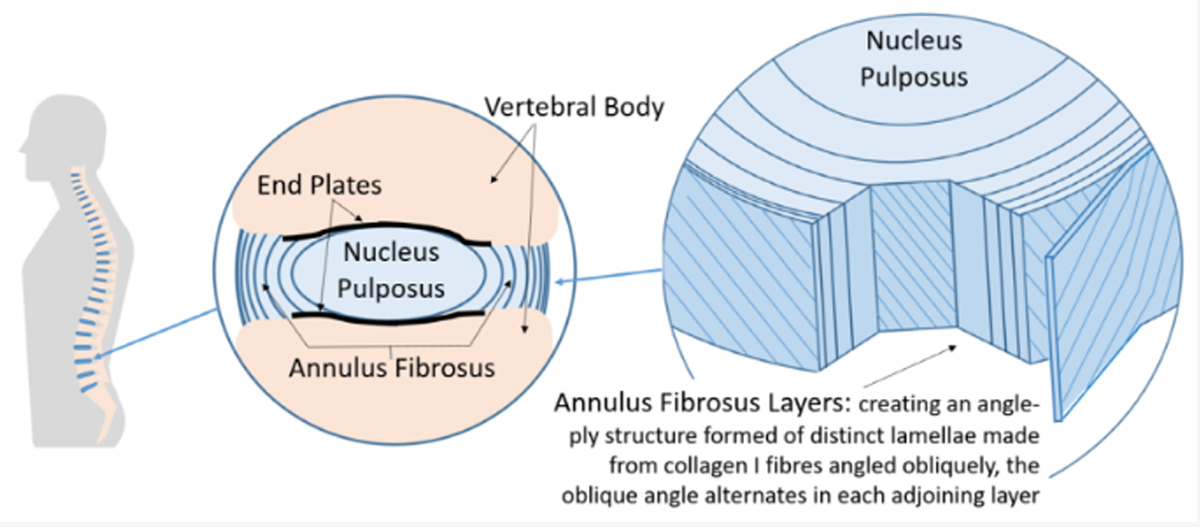Comparison of Treatment Outcomes in Nonspecific Low-Back Pain Patients With and Without Modic Changes Who Receive Chiropractic Treatment
SOURCE: J Manipulative Physiol Ther. 2018 (Sep); 41 (7): 561–570
Michèle Annen, MChiroMed, Cynthia Peterson, DC, MMedEd, B. Kim Humphreys, DC, PhD
Chiropractic Medicine Department,
Faculty of Medicine, University of Zurich,
Orthopaedic University Hospital Balgrist,
Zürich, Switzerland.
OBJECTIVE: The aim of this study was to determine if there was a difference in outcomes in patients with nonspecific low back pain, both with and without Modic changes (MCs), who received chiropractic care.
METHODS: This prospective outcomes study included 112 patients with low back pain without disc herniation on magnetic resonance imaging. All patients were treated with spinal manipulative therapy. At baseline, the numerical rating scale (NRS) and Bournemouth Questionnaire (BQ) for disability were collected. The NRS, BQ, and Patient’s Global Impression of Change (primary outcome) were collected at the follow-up time points of 1 week, 1 month, and 3 months to assess overall improvement. Magnetic resonance imaging scans were analyzed for the presence of MCs and, if present, classified as Modic I or II. The χ2 test was used to compare the proportion of patients reporting clinically relevant “improvement” between patients with and without MCs and between Modic I and Modic II patients. The unpaired Student t test was used to compare NRS and BQ at baseline and change scores at all follow-up time points.
RESULTS: For the primary outcome measure, the proportion of patients reporting relevant “improvement” (Patient’s Global Impression of Change), and for the secondary outcome measures (NRS and BQ change scores), there were no significant differences between Modic positive and Modic negative patients or between Modic I and Modic II patients.
There are more articles like this @ our:
Low Back Pain and Chiropractic Page
and the:
CONCLUSION: Neither the presence nor absence of Modic changes (MCs) nor the Modic change category were related to treatment outcomes for patients with low back pain without disc herniation who received chiropractic care.
KEYWORDS: Chiropractic; Diagnostic Imaging; Manipulation, Spinal; Outcome Assessment (Health Care)
From the FULL TEXT Article:
Introduction
Modic changes (MC) categorize 3 types of degenerative abnormalities in the bone marrow around the vertebral endplates and are visible on magnetic resonance imaging (MRI). [1] They are most common in the lumbar spine and are associated with degenerative disc disease at the same level of involvement. [1] The combination of low-signal intensity on T1-weighted sequences and high-signal intensity on T2-weighted sequences is named MC type I and represents bone marrow edema. [1–3] The appearance of high-signal intensity on both T1-weighted and T2-weighted sequences corresponds to Modic type II changes, the same as fat. Modic type III changes are shown as low-signal intensity on both T1-weighted and T2-weighted sequences and would appear as sclerosis on routine radiograph. [1, 4–6] Many studies have already shown that the incidence of MC increases with age [4, 7] and that MC tend to convert to other types over time, mostly type I to type II. [8–10]
The role of MCs in the lumbar spine as pain generators is currently well known, [11, 12–15] especially regarding the activity of MC type I. It is also well known that patients with disc herniations are more likely to have MCs at the level of herniation. [16–19] In recent years, many studies have evaluated the effects of different types of treatment on MC and how patients with MC respond to various treatments. [2, 20–27]
The effect of invasive treatments on patients with low back pain (LBP) was recently studied by Lee et al. [25] They evaluated the outcome predictors of lumbar transforaminal epidural steroid injection in patients with radiculopathy owing to a herniated intervertebral disc (HIVD). They showed that the only good MRI-based predictor for improvement was the location of the HIVD. The HIVDs in the foraminal or in the extraforaminal zone were significantly more common in the very best outcome group than HIVDs in the central or in the subarticular region. Other MRI findings, such as grade of disc degeneration, disc height loss, or MCs, were not statistically significant in predicting good or bad outcomes from steroid injections.
Read the rest of this Full Text article now!







Leave A Comment